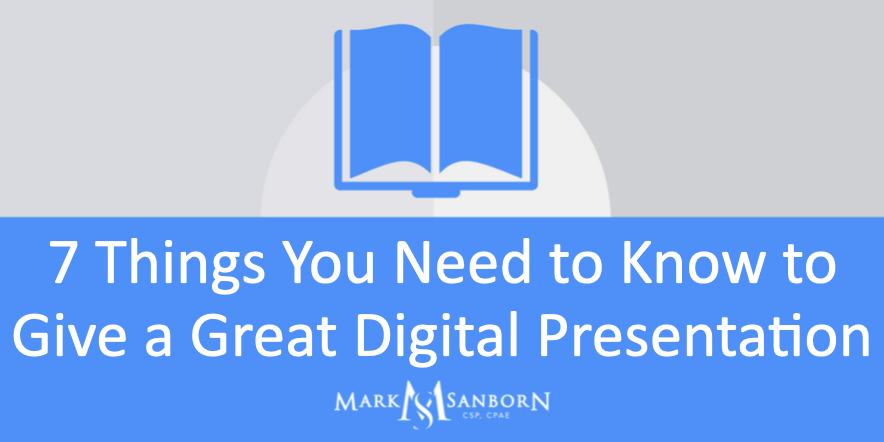If you search Google to find information about giving virtual presentations, you’ll get the most hits on presentation ideas and techniques. You also get lots of hits on “digital tools” which include platforms, lighting, audio, room setup and the like.
You’ve got to both present and produce to succeed at virtual presentations.
My friend Mark Camacho is also my business partner at Livestream Denver. Mark C. is a digital production genius. He knows how to make a digital presentation extraordinary. I would much rather present than produce as that’s what I’m best at and enjoy most.
That’s why I partnered with Dave Reed and Joe Heaps to create VPI Institute. We teach leaders, sales and HR professionals, speakers and trainers how to make ordinary virtual presentations extraordinary, both in the science of technology and the art of presentation.
But there is something that should always precede both production and presentation: the philosophy of presenting digitally.
Here are seven things you need to know:
1. Start with clarity. Why are you giving a virtual presentation? Would a phone call have worked as well or better? What is the ideal outcome of your screen time? Digital presentations work well when you need visual contact and feedback that you have your audience’s attention, you want to engage participants, and slides and/or graphics are important. So make sure a virtual presentation is necessary and then clarify the outcome you want to achieve.
2. Break preoccupation. Your start is crucial. This is true in all presentations, but harder to achieve digitally. It is easier to feign interest. Slow starts are penalized by instant disengagement. Open boldly so that people know that what you have to say is relevant to them. (And if you need to make some announcement or cover “housekeeping” or something equally mundane, do that after the strong open.)
3. Use variety. Monotone presentations of any kind are never good, but lack of variety completely kills virtual presentations. As the presentation goes on, interest will waiver unless you use variety to build and maintain momentum. Use variety in your pace, volume and presentation techniques to maintain interest.
4. Engage your audience. You want active participants, not passive listeners. Being separated by time and space don’t prevent you from involving your virtual audience. Ask as well as tell. Be specific in asking for feedback and periodically open the presentation for questions.
5. Educate and encourage. Getting people to want to learn from your ideas is as important as the ideas themselves. Without encouragement to use your ideas, the best ideas disappear as soon as the presentation ends.
6. Be the message. The message is what you say (your content), how you say it (your delivery), and what is done as a result (your impact). The message is primary, so it must be your role. Technology can only support and never replace the message.
7. Close powerfully. The recency effect means your listeners will best remember information most recently received and that, of course, would be the information you provide when you close. Will you make a statement or ask a question? Are you crystal clear on what you want your audience to remember and do? One of the best ways to close is to issue a call to action so that people start making the move from hearing your ideas to implementing them. Use your screen and skills to move your audience from “that’s interesting” to “that’s necessary!”
Master the technology of a winning virtual presentation. Develop the skills of a virtuoso presenter but build on a solid foundation of knowing what it takes to make any presentation extraordinary.
Mark Sanborn is an award winning speaker and Leadership Expert in Residence at High Point University, the Premier Life Skills University. Global Gurus lists him as the #5 leadership expert in the world for 2020. For more information about his work, visit www.marksanborn.com. He also helps professional speakers and execs creates superior digital presentations. Learn more here.
P.S. Whey would you want to be a “Fred?” Find out why and how here.








